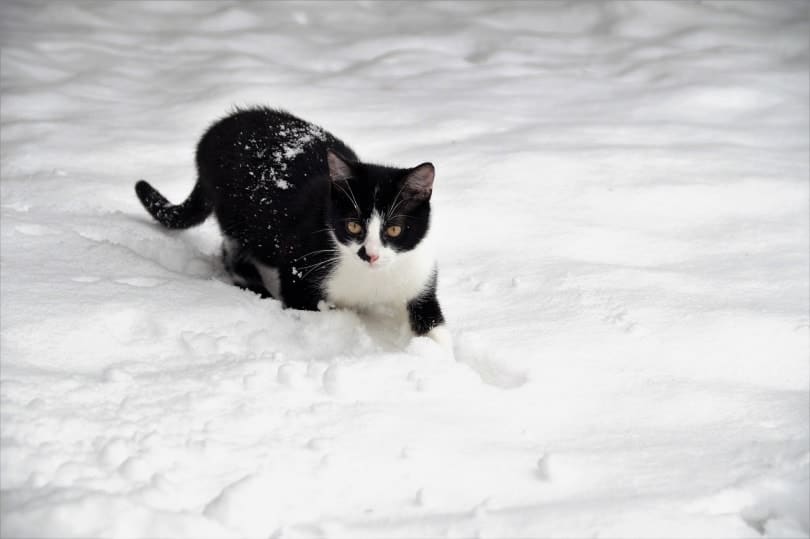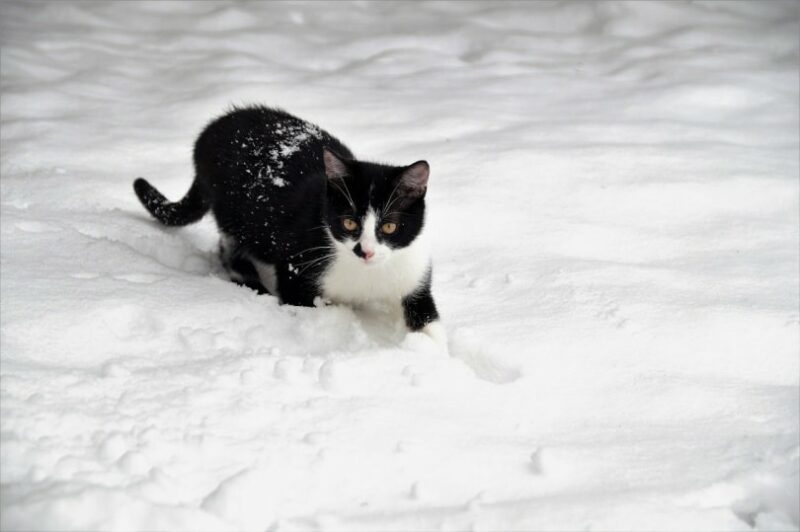Cats are not known to be the biggest lovers of snow. Not all cats enjoy the cold, but some will since it mainly depends on the breed. Still, most house cats do not like the cold and wet feeling of snow.
An event like snowing can be an exciting experience for cats, especially if it is their first time being introduced to snow. You may have seen all the adorable online videos going with cute cats exploring snow, but you may be wondering if cats truly like snow? This article has all the surprising answers you need!

Do All Cats Like Snow?
Cats originated in desert climates, so they prefer dry environments. Over the years, some breeds have adapted to the cooler weather by growing thicker fur that acts like an insulator. These breeds include the Norwegian and Siberian Forest cats.
They find snow irresistible and enjoy leaping and playing in the snow when given the opportunity. Traditionally, cats prefer cozy, warm places over cold and wet surfaces, and you’ll notice your cat seeking out sunny and warm places when the temperature starts to drop.
However, some cats have evolved to thrive in cold climates. This includes the following breeds:
Every cat is unique, and their feelings about snow may surprise you. Regardless of their breed, some cats like playing and experiencing what snow has to offer, whereas others want nothing to do with the cold and wetness snow brings into their life.
There is no sure way to determine if your cat will like snow or not until you let them examine a snowy environment.
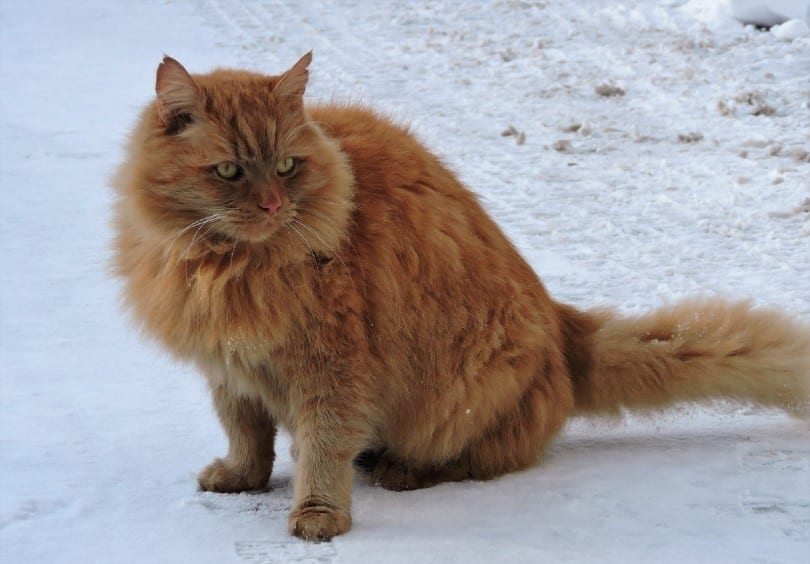
How To Keep Your Cat Safe In Snow
Cats who like snow will spend more of their time outdoors exploring the snow-white heaps and experiencing the cold. However, you need to take steps to ensure your cat is kept safe in snowy environments so that they can enjoy the snow without being put in harm’s way.
Cats are prone to developing illnesses like hypothermia below freezing temperatures. Severe cases are life-threatening, especially if they lose blood flow to their limbs from being in the snow for too long. It is always best to put measures in place to guarantee their safety so your cat can enjoy exploring snow if it is something they like.
1. Protect Their Paws
If your cat has been adventuring in the snow, you may find that their paws, legs, and stomach become damp and cold. It is essential to dry their fur and paws thoroughly with a soft towel after they’ve played in freezing temperatures. Then, keep them in a heated room. Depending on the length and type of your cat’s coat, it may take a while to dry.
Debris from the snow can get trapped between their paw pads, which can be irritating, and your cat’s paw pads can also become dry and cracked from the cold air. You can use a cotton pad to wipe their paws clean.
2. Keep Them Well-Fed
Cats who spend time playing in the snow use more energy trying to keep themselves warm. It is essential to ensure your cat is fed a healthy diet full of the nutrients to fuel their bodies and maintain lean muscle and fat to keep themselves insulated. You can divide their meals into small portions throughout the day to sustain their energy.

3. Do not Let Them Get Too warm
If your cat continuously goes outside when it’s snowing or during freezing temperatures and then sits near a heating device, they are at risk of overheating. This abnormal hot-to-cold body regulation isn’t healthy.
Your cat may also spend less time drinking water when it is snowing, and their bodies constantly keep them warm by using a lot of energy, which can cause your cat to become dehydrated.
4. Keep Their Environment Safe
In bad weather, heavy snow and ice can seal your cat flap closed, which can prevent them from entering or exiting your home. This can be dangerous because your cat can get trapped outside. If it is snowing, your cat should have at least two entry and exit options available.
Cats may also seek shelter in strange places when it is snowing, such as your car’s engine or in sheds and crevices. Always check that your cat is not hiding in the hood of your car before you start it, and regularly check sheds and other places in your yard that could get snowed shut and trap your cat inside.
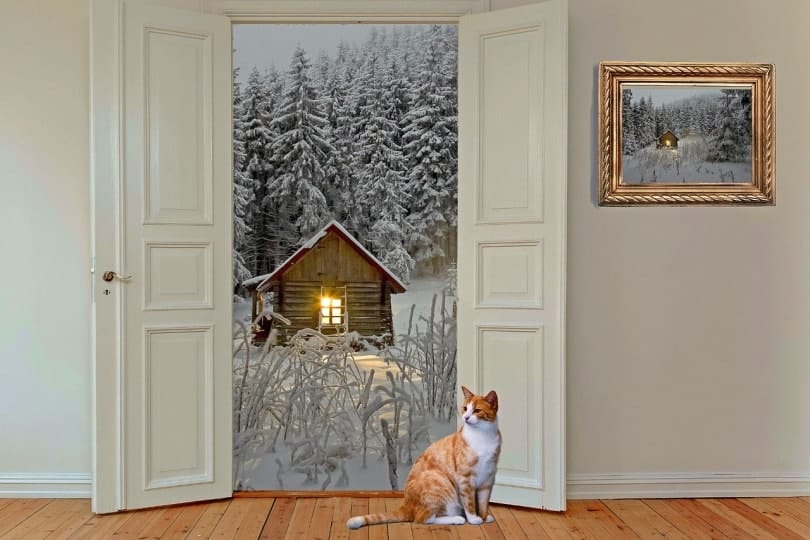
5. Keep Them Comfortable
Humans have many ways to keep warm when it snows and the temperature drops, but your cat does not. It is vital to ensure that they have a warm and soft bed and blanket to return to after playing in the snow. Do not place radiators or heating devices close to the area your cat sleeps or rests on because it may cause them to overheat or become uncomfortable.
The cold can cause your cat’s joints to become stiff and painful, especially if they are old or suffering from arthritis and other joint problems. You can find several commercial supplements designed to help cats with joint issues, but it’s best to get a prescription from your vet since they’ll know which products are safe for your pet.
How To Tell If Your Cat Is Too Cold
Although some cats will ignore the coldness and discomfort to play in the snow, it is important to look for signs that your cat is becoming too cold.
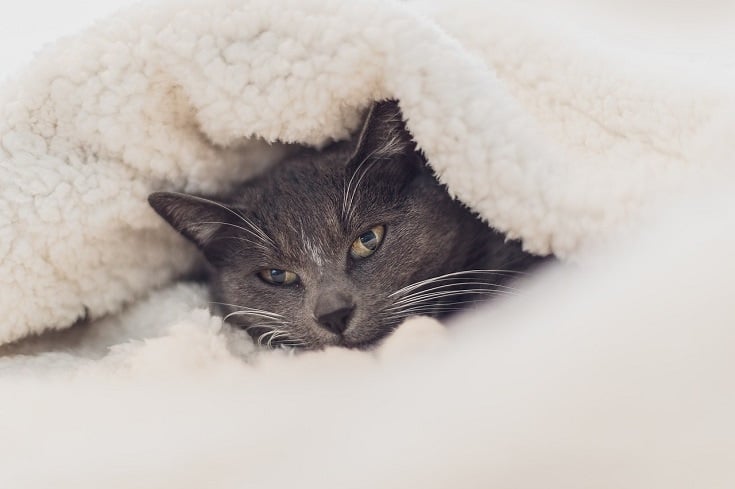
- Shivering or shaking
- Lethargy
- Increased appetite
- Sleeping near heat sources
- Appearing uncomfortable or anxious and meowing excessively
- Curling into a tight ball with their tail wrapped around their body
- Hiding and refusing to go outside when the temperature drops
Conclusion
If your cat takes a liking to playing in the snow, and they do so under supervision with safety measures in place, it can become a fun experience for them. Never force your cat to play in the snow; it should be a decision they make themselves. You can easily tell if your cat likes the snow by observing their behavior, but it can become dangerous, so ensure that you know where your cat is when the weather becomes too harsh for them.
Featured Image Credit: ivabalik, Pixabay

